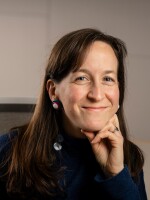KERN COUNTY, Calif. – Hundreds of small aftershocks have followed a more sizeable earthquake that struck this week south of Bakersfield, though most have been too weak to be felt.
The largest quake struck at 9:09 p.m. on Tuesday night. Although its epicenter was near the unincorporated community of Mettler, roughly equidistant from Lamont and Frazier Park, people reported to the U.S. Geological Survey that they could feel it as far away as San Diego and the Bay Area.
Though the number of aftershocks may be alarming to some, Matthew Herman, an assistant professor of geology at CSU Bakersfield who specializes in seismology, said it’s no reason to panic.
“I would call this a fairly typical main shock-aftershock sequence…one large event followed by numerous smaller events,” he said.
And while this region isn’t as seismically active as others in California, earthquakes aren’t unheard of here. A magnitude-4.1 quake, which can cause minor but noticeable shaking, occurred in the same region just a few months ago.
And the origin of this sequence is not far from the hypocenter of a massive, magnitude 7.5 earthquake in 1952 that killed 12 people and caused hundreds of millions of dollars (adjusting for today’s currency) in damage to Tehachapi and parts of Bakersfield.
“This means that there's an earthquake hazard there for the future,” Herman said.
Tuesday’s earthquake occurred in a too -remote of an area to do much damage in more populated centers. But had it struck in the middle of Bakersfield, it could have been much more destructive.
There is historical evidence of farther-off earthquakes leaving a lasting impact on this region as well.
Some of that evidence was included in a 1978 scientific article published in the Bulletin of the Seismological Society of America. According to the authors, the 1857 Fort Tejon earthquake, a quake of an approximate magnitude of 7.9 that struck a remote area near the Monterey County city of Parkfield, knocked over two companies of U.S. troops that had been camped out somewhere along the Kern River.
“They were astonished to see Kern River running upstream. Large trees were uprooted, and in the language of some who were there, ‘all creation seemed to be going into one eternal smash,’” the article reads.
As for when the next earthquake will come — and how big it will be — there’s no way to predict. But Herman says now is a good time to start preparing — like with evacuation plans, go-bags containing extra food and clothes, and possibly even earthquake insurance.
“You don't have to go crazy, you don't have to pretend like it's the end of the world,” he said, “but just being ready for a potentially damaging earthquake is really important in our neck of the woods."


